Security is a fundamental aspect of our daily lives, whether it be for our homes, businesses, or personal belongings. Most of us rely on traditional security measures, such as locks and alarm systems, to safeguard our properties. These measures alone may not be enough to protect against all types of threats. Criminals are always finding new ways to bypass security systems, and it is important to stay ahead of the game.
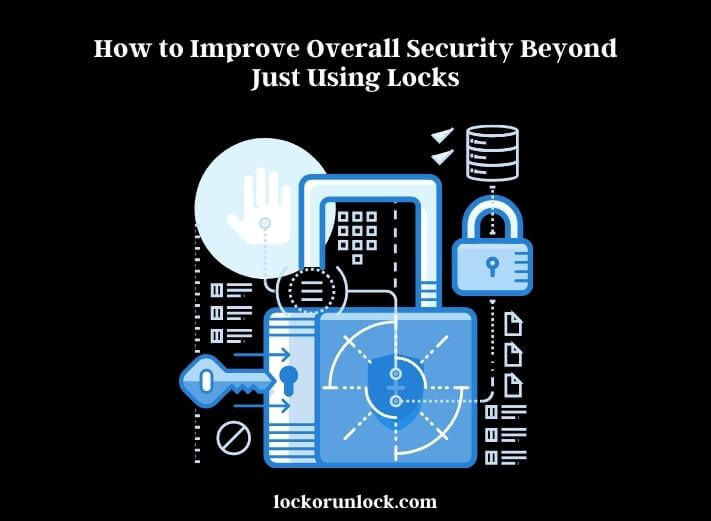
In today’s world, where cybercrime is also becoming increasingly common, it is essential to go beyond traditional security measures to ensure complete protection. As such, it is necessary to assess our security needs and take appropriate measures to improve overall security beyond just using locks.
Assessing Your Security Needs
Assessing your security needs is the first step in improving overall security beyond just using locks. This involves identifying the risks and threats that you face and evaluating the vulnerabilities in your security system.
To identify the risks and threats, you need to consider various factors such as the location of your property, the crime rate in the area, and any previous security breaches or incidents. For instance, if your property is located in a high-crime area, you may be at a higher risk of theft or burglary. Similarly, if you have experienced security breaches in the past, you may need to re-evaluate your security measures.
Once you have identified the risks and threats, you need to evaluate the vulnerabilities in your security system. This involves assessing the weaknesses in your physical security measures such as doors, windows, and locks, as well as any potential weaknesses in your cybersecurity measures such as weak passwords, outdated software, or unsecured Wi-Fi networks.
You can assess your security system by conducting a thorough security audit or by hiring a professional security consultant. A security audit will help you identify any vulnerabilities and recommend appropriate measures to enhance your security system.
Implementing Physical Security Measures
Implementing physical security measures is an effective way to improve overall security beyond just using locks. Physical security measures are tangible security features that help deter potential threats and prevent unauthorized access to your property. Some of the physical security measures that you can implement include:
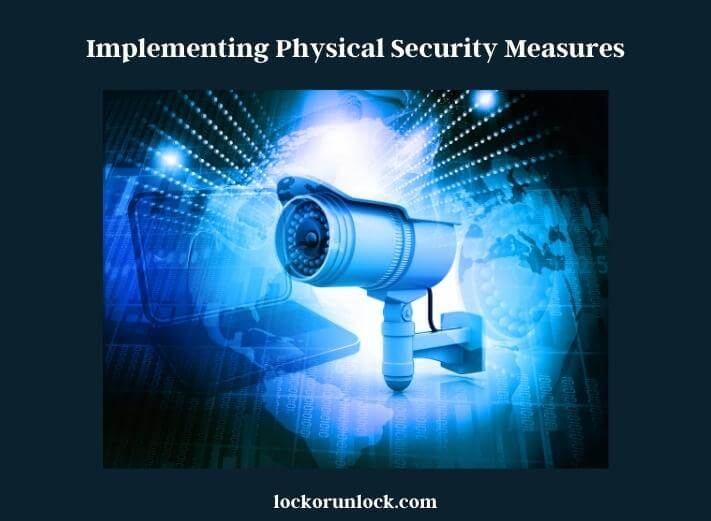
Surveillance Cameras
Installing surveillance cameras in and around your property can help deter potential threats and provide evidence in case of a security breach. Make sure to place cameras in strategic locations to cover all areas of your property.
Securing Doors and Windows
Doors and windows are the most vulnerable entry points in any property. You can secure doors and windows by using reinforced glass and materials, installing deadbolts and peepholes, and using security screens.
Access Control Systems
Access control systems allow you to restrict access to certain areas of your property. These systems can be in the form of keypads, swipe cards, or biometric scanners. They can also be integrated with surveillance systems to monitor access activity.
If you want to know about biometric locks and their uses, Read here for a detailed explanation.
Perimeter Security
Perimeter security includes measures such as fencing, gates, and barriers to prevent unauthorized access to your property. Make sure to choose strong and durable materials to withstand potential attacks.
Lighting
Good lighting is essential for any security system. Make sure to install adequate lighting around your property, especially in areas such as entryways and parking lots.
It is important to note that these measures should be implemented in a strategic and cost-effective manner to ensure maximum security benefits. You may want to consider consulting a security professional to help you choose the most suitable physical security measures for your property.
Process for Enhancing Cybersecurity Measures
Enhancing cybersecurity measures is another crucial aspect of improving overall security beyond just using locks. With the rise of cybercrime, it is important to protect your digital assets and information from potential threats. Here are some ways to enhance your cybersecurity measures:
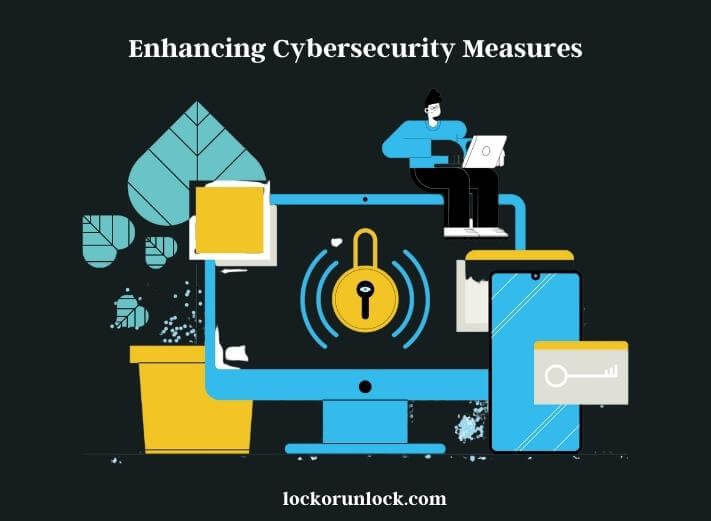
Strong Passwords
Use strong and unique passwords for all your online accounts. Avoid using the same password for multiple accounts, and change them regularly.
Two-Factor Authentication
Two-factor authentication adds an extra layer of security to your online accounts by requiring a second form of identification such as a code sent to your phone.
Keep Software Updated
Keep your software and operating system up to date to protect against known vulnerabilities and security flaws.
Anti-Virus and Firewall
Install anti-virus software and a firewall on all your devices to protect against malware and other cyber threats.
Backup Data
Regularly back up your data to an external hard drive or cloud storage to protect against data loss due to cyber-attacks.
Secure Wi-Fi Networks
Use strong passwords for your Wi-Fi networks and avoid using public Wi-Fi networks for sensitive activities such as online banking.
Educate Employees
Educate your employees about cybersecurity best practices such as avoiding phishing scams, using strong passwords, and being vigilant about suspicious emails or messages.
Steps for Developing Security Protocols
Here are some steps for developing effective security protocols:
Identify Security Risks
Conduct a risk assessment to identify potential security risks and threats that your property or business may face.
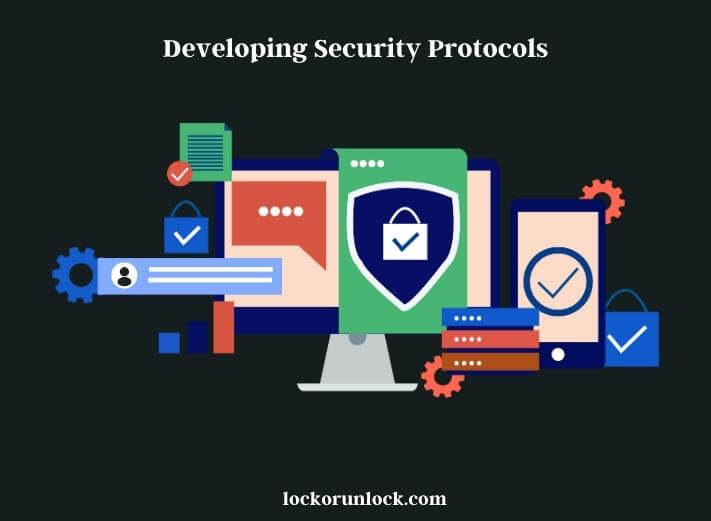
Determine Security Objectives
Define your security objectives and goals based on the identified risks and threats. This will help you determine the appropriate security protocols needed to achieve these objectives.
Develop Standard Operating Procedures
Develop standard operating procedures (SOPs) that outline the specific steps and guidelines for implementing your security measures. These SOPs should be specific, clear, and easily understood by all relevant parties.
Establish a Chain of Command
Establish a chain of command and clearly define roles and responsibilities for implementing security protocols. This includes identifying who is responsible for monitoring security systems, responding to security incidents, and reporting incidents to appropriate authorities.
Conduct Training and Education
Conduct training and education programs for all relevant parties to ensure that they understand and can effectively implement the security protocols. This includes training on physical security measures, cybersecurity measures, and emergency procedures.
Regularly Review and Update Protocols
Regularly review and update your security protocols to ensure that they remain effective and up to date with emerging threats and best practices.
Maintaining Security Measures
Maintaining security measures is the final piece of the puzzle in improving overall security beyond just using locks. Even with the best security measures in place, they must be regularly maintained to remain effective.
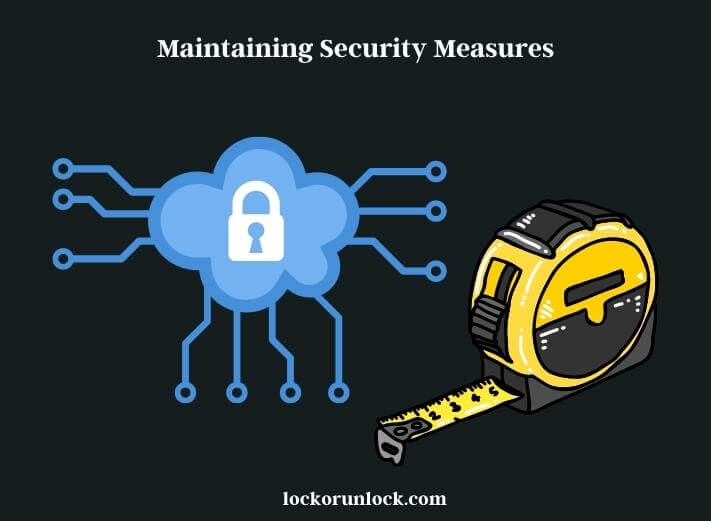
Conduct regular inspections of your physical security measures to ensure they are functioning properly. This includes checking doors and windows for signs of wear and tear, testing access control systems, and ensuring surveillance cameras are working correctly.
Keep your anti-virus software, firewalls, and other security software up to date to protect against emerging threats and vulnerabilities.
Regularly back up your data to ensure that you can recover quickly in case of a security breach or data loss.
Conduct regular training for employees to ensure they are aware of the latest security risks and best practices.
Test emergency procedures such as evacuation plans and response protocols to ensure that they are effective and can be implemented quickly in case of an emergency.
Regularly review your security measures to identify any potential gaps or areas that need improvement.
Can Improving Security Measures Help Prevent Being Locked in Public Storage?
Improving security measures in public storage facilities can greatly reduce the risk of being locked in. By following the recommended steps to take when locked in storage, such as staying calm, contacting the facility staff, and having emergency contacts on-hand, individuals can ensure a safer storage experience.
The Bottom Line
Improving overall security beyond just using locks is essential in today’s world, where security threats can come from various sources. While locks are an important aspect of physical security, they are not enough on their own.
Assessing your security needs, implementing physical security measures, enhancing cybersecurity measures, developing security protocols, and maintaining your security measures are all crucial steps to improve overall security. These steps require careful planning, implementation, and ongoing maintenance.
It is important to remember that security is not a one-time fix but an ongoing process that requires regular review and updates. By following these steps and working with security professionals, you can ensure that your property or business is well protected against potential threats.
Security is not just a matter of protecting your property or business assets; it’s also about protecting your customers, employees, and yourself. So, take the necessary steps to improve your overall security today and enjoy greater peace of mind knowing that you are well-protected.
